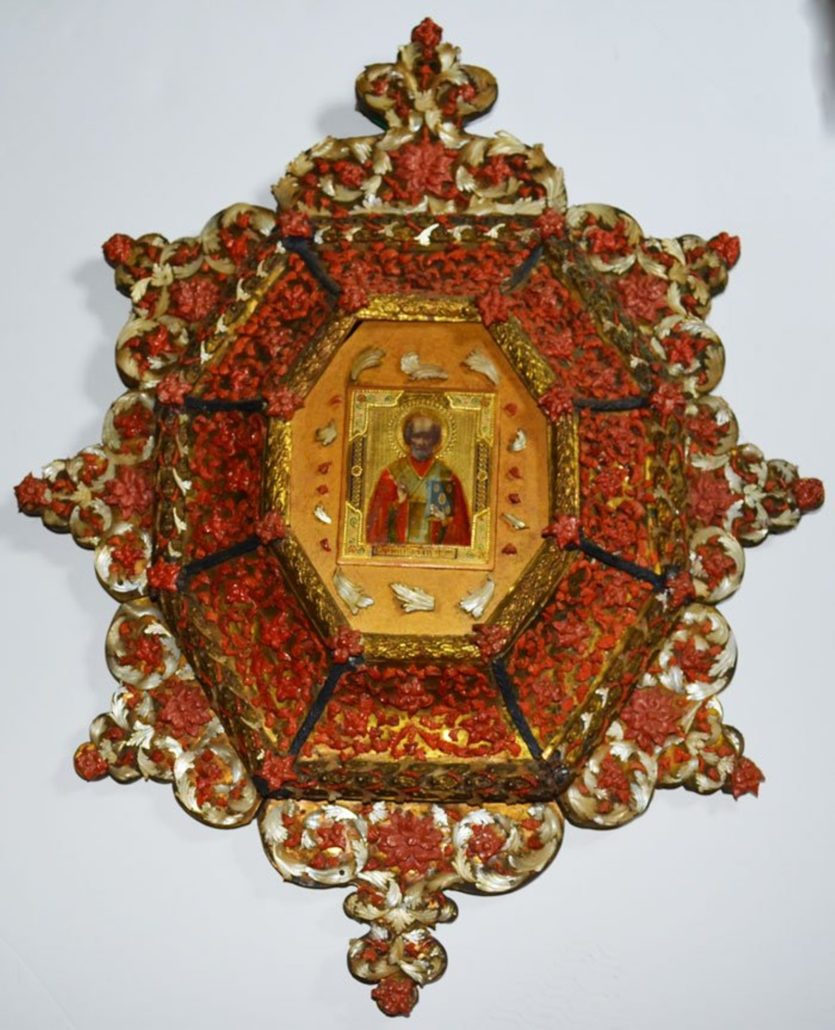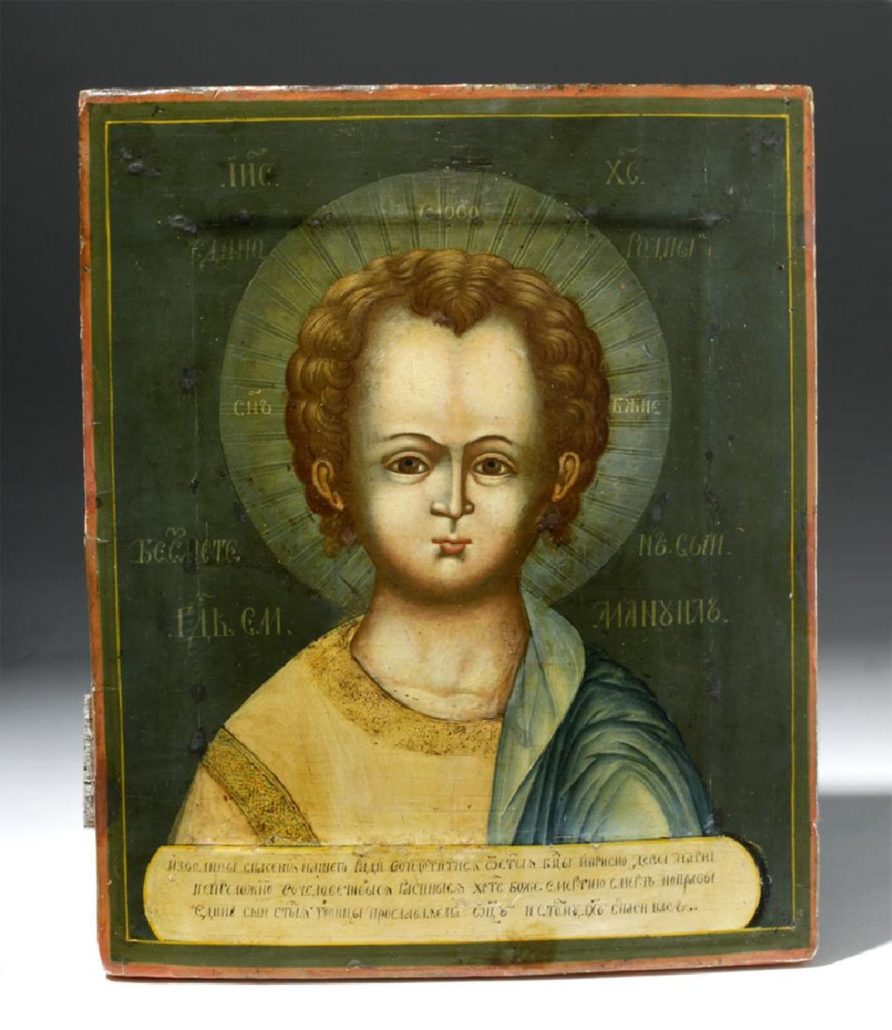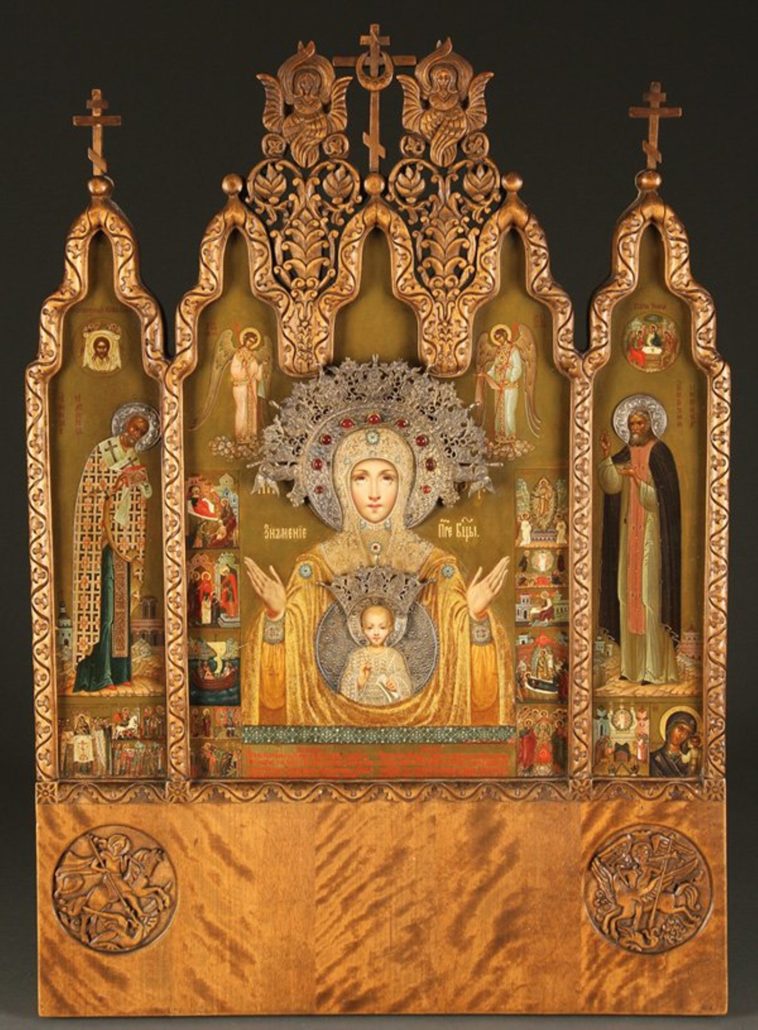
NEW YORK — An integral part of the Eastern Orthodox Christian faith, icons are found in most homes in Russia, as well as churches. Usually painted on wood, although occasionally made of copper, these sacred objects depict saints and holy persons or stories from scripture. They are sometimes displayed in ornate covers (oklads) covered in precious metal and embellished with gems or pearls or in cases with glass fronts. They are not worshipped in a shrine but are objects steeped in religious symbolism that serve to focus the power of one’s prayer to God, acting as “windows into Heaven.”
Many religious homes in Russia have icons displayed on the wall in a “krasny ugol” — a “red” or “beautiful” corner of the home where icons are displayed.
Although they are visual images, as opposed to text, Russians sometimes speak of icons as being “written,” because in the Russian language, the same word (“pisat” or “писать”) means both to paint and to write. Icons are regarded as the Gospel in paint, so strict attention is given to ensure the representations are accurate and faithful.

Among the rare subject matter seen in icons is the Emmanuel Christ. “The term ‘Emmanuel’ was coined by the prophet Isaiah and literally means ‘God is with us,’ ” said Sydelle Rubin-Dienstfrey, a fine arts specialist at Artemis Gallery, Erie (suburban Boulder), Colorado. Citing an icon depicting Christ Emmanuel offered in a March 2017 sale produced by Artemis Gallery, she noted this icon “really captured that sense of Christ Emmanuel’s immediate presence — at once eternally young, yet wise. According to scholars, his youthful demeanor symbolizes the youth of the sacrificial lamb.” That icon, shown above, sold for $6,000.
Asked what she finds most appealing about Russian icons, Rubin-Dienstfrey said the artists created pieces that embody their passion for religious subjects in such a way that the viewer, centuries later, can feel that passion. “I think that people are drawn to icons because in addition to being spiritual works of veneration, they are mesmerizing works of art — truly aesthetically beautiful.”

Jackson’s Auction in Cedar Falls, Iowa, has also sold a number of sublime examples of Russian icons in recent years and holds the top price for an icon in LiveAuctioneers’ auction archive with a circa-1925 icon triptych (shown above), signed N. Emelianov, that realized $525,000 in November 2012.
In a postsale press release for a June 2014 auction, Jackson’s President and CEO James Jackson said that icons executed between the years 1855 and 1910 were representative of the late style, which is extremely popular with “nouveau-riche” Russian collectors. Three in the referenced sale each sold for $125,000 against estimates of $10-$15,000 or less.
“Ironically,” Jackson said, “one can purchase a very excellent icon of the same size, but 250-300 years older, right now for a fraction of the price of which some of these later icon examples are selling for. In my estimation, these old icons are probably a good bet as these will surely rise in value again.”
Among the most popular saints depicted on Russian icons is St. Nicholas the Wonderworker, according to Rubin-Dienstfrey. “He is among the most widely revered saints in Eastern Orthodox Christianity… Many worshippers were so inspired by him that they, too, elected to lead holy lives and perform good deeds as well. Other popular subjects include the Virgin Hodegetria — “she who shows the way” — and the Christ Pantocrator. “The most accepted translation of Pantocrator is “almighty” or “all powerful” and these icons ably project the idea of Jesus’ omnipotence.”
Desirable to collectors and continuing to fetch robust prices at auction, Russian icons are venerated for their ability to connect one to the holy and often provoke strong reactions in the beholder.
“When I experience an exceptional icon, I am moved,” Rubin-Dienstfrey said. “It is similar to the feeling that overtakes me when I enter a Gothic cathedral, only somehow more intimate and personal.”
# # #

